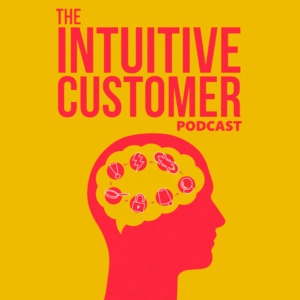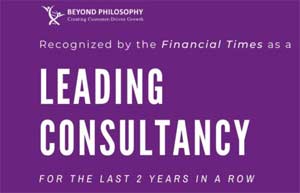Defining and managing your customer service culture is a significant issue for many organizations. Today we share some important considerations for establishing your customer service culture as well as the best practices of the leading customer service organizations.
We spoke with Marilyn Suttle, a conference speaker, and three-time best-selling author and coach, on a recent podcast. She helps leaders and teams make subtle shifts to create breakthrough success for customers. Her clients have won industry awards, raised customer satisfaction scores, and increased employee engagement.
Suttle says defining and becoming a guardian of your customer service culture is essential for your organization’s leadership. It’s the standout piece that allows you to be your own entity in the marketplace. After all, Suttle says, your culture is not just words on a page. Your mission, vision, and values define your customer culture, but your day-to-day actions provide it.
However, with employees scattered around the globe and the regular employee churn an organization has, keeping a company’s customer culture alive is difficult. You can have it established and then a year later, due to turnover or mergers with other global organizations or any host of reasons, it’s gone again.
Essential Considerations for Your Customer Service Culture
Singapore Airlines, which has been consistently voted one of the top airlines in the world, has a strong customer service culture. Suttle says one of the things they say is arbitrary customer service gets you arbitrary results.
In other words, you must first define your culture and then establish standards for achieving that culture. Then, you implement it.
Implementation can have its challenges. For some organizations without a customer service culture or with a less robust customer service culture, change is difficult. Add to it that leadership also wants to have an ROI. The implementation team will have their work cut out for them.
Suttle says you should take the approach to change that customers have lifetime value. Moreover, there is a link between that emotional connection customers feel for you and the dollars they spend with you. If you make a customer service culture a leadership conversation that focuses on this relationship, Suttle says this is where the real change happens.
Suttle says we think that customer service is all about the customers, but it is really about the employees. Employees are the center of customer service because what happens on the inside of a company, will eventually show up on the “outside.” If your organization has an unhealthy employee experience, meaning there is no trust and departments aren’t talking to each other, etc., then it will reflect in your employee’s behavior towards customers.
In our global customer experience consultancy, we call this situation an inside-out approach or an environment focused on what is good for the company rather than what’s good for the customers. We encourage organizations to flip that around and have an outside-in approach meaning they see their experience as a customer does. When our clients adopt an outside-in approach, they see firsthand what moments in their experience are not customer-focused.
Suttle says that same principle of outside-in applies to your employee experience. We shouldn’t see employees as simply revenue generators. Many times, employees want to grow and spend a significant part of their life working for you. She suggests walking through your company as if you were a new hire. Consider what in your employee experience would make you want to get up in the morning and come to work—and what makes you want to pull the covers up over your head again instead!
When consulting employees about what you expect, Suttle says to explain why. The “why” is essential to getting your employees to create the “what,” which in this case is customer experiences that are memorable and create an emotional connection between the customer and your brand.
Also, changing your mindset from “what’s in it for us” to “what’s in it for them” creates a win-win. Suttle says when your customers are winning, so are you.
The Top 10 Best Practices of the Leading Service Organizations
Suttle undertook a two-year study of the best companies that excelled at customer service for her book. She researched and interviewed what these companies’ leadership did. Here are the top ten.
- Acknowledge what works. Too often we don’t celebrate successes. However, finding ways to draw attention to the positive goes a long way to motivate teams.
- Communicate. Communication is critical for achieving both personal and sales goals. Many leaders are, conflict-averse. They see a problem, and know it has to be fixed, but it’s uncomfortable. However, leadership should address it anyway to move forward.
- Define expectations and establish accountability. Let people know what you want from a leadership perspective and measure the results. Hold each other and your teams to a standard.
- Define and improve your responsiveness. Suttle spent six months with a global leadership team. She suggested they improve their responsiveness. They said they were responsive now. She asked all the members of the team to write down what they meant by “responsive” Everybody had a different definition, from half a day to 24-hours. She encouraged them to get on the same page. For example, with email she suggested they respond immediately with an acknowledgment of the receipt of the inquiry and a message that informs the customer you are working on it. Even better if you can tell them when you will get back to them.
- Remove “moments of irritation.” Irritating parts of your experience leave a lasting negative impression of your company. For example, can a customer go to your website and find your phone number, or do they have to hunt for it? Suttle says you should look at each moment of customer contact and remove these irritations. Then, make it easy, fast, and convenient for customers to interact with you in every area.
- Set positive subconscious clues. Every experience has subliminal clues that inform you about how an organization thinks of customers. Make yours positive. Suttle says one company had a voice mail message that said the person was “continuously checking messages throughout the day.” It assured her that the person would hear her message soon and would get back to her in a reasonable amount of time.
- Reinforce continuously. Too often, a customer culture is designed and implemented, but then, over time, the standards slip. Suttle says reinforcing these concepts is easy to do and there are many ways to do it. One CEO carries a three by four card that has their values printed on it, as a reminder when they are in meetings and making decisions. He has the rest of the team do it, too. Also, you can catch people doing good. For example, you could give a “shout out” to the driver that came in early to ensure an order got out to a customer.
- Incorporate customer service wins into established parts of the employee’s experience. From the daily huddle to the weekly team meeting, add a point where the employees share a moment where they put the customer first. It sends the message of what you expect, and it also allows everyone on the team to learn from one another’s successes.
- Recruit the right kinds of employees. People who have a strong work ethic like to work around others who share similar characteristics. Have your high performers recommend people when you are hiring.
- Listen before you fix. In customer service, customers want to know they were heard. Suttle advises that you let them finish venting before you jump in and fix the problem. When they feel listened to, the customer is more likely to hear your solutions.
Let’s face it; implementing and maintaining a customer service culture is challenging. When I talk to organizations about implementing anything related to customer experience, an issue that comes up is how are we going to fight against the massive tidal wave of not wanting to change. We can come up with these great ideas and these great programs that we can implement but without a proper culture, it won’t work.
Suttle’s plan to define the customer service culture and set standards is an excellent way to start. Also, the strategy to work from the top is essential; if leadership isn’t on board, no one else will be either. And of course, the ten best practices will help your efforts also. I especially like incorporating the “how did I put customers first this week?” into company routines.
You can have the best strategy and it won’t work if you have the wrong culture. One of my favorite phrases is “Culture eats strategy for breakfast.” The reason your customer experience is the way it is stems from the culture you have. It is up to you to ensure you have the type of culture that will allow your team to deliver the experience you worked so hard to design and implement—and keep it going. Don’t let your culture eat all that hard work.
To hear more about Being the Guardian of Your Customer Service Culture in more detail, listen to the complete podcast here.
If you want to benchmark your organization’s performance in the new world of behavioral economics against other companies, take our short questionnaire. Once you submit, we compare your answers against what we know about the market and send you a free personalized report about where your organization is today.

Hear the rest of the conversation on Being the Guardian of Your Customer Service Culture on The Intuitive Customer Podcast. These informative podcasts are designed to expand on the psychological ideas behind understanding customer behavior. To listen in, please click here.
If you enjoyed this post, you might be interested in the following blogs and podcasts:
BRAND OR CUSTOMER EXPERIENCE – WHAT COMES FIRST? [Podcast]
BRANDING AND CX: THE SURPRISING WAY THEY WORK TOGETHER TO FORM CUSTOMER LOYALTY
5 THINGS YOU SHOULD DO TODAY TO MANAGE UNCERTAINTY IN BUSINESS
Colin Shaw is the founder and CEO of Beyond Philosophy, one of the world’s leading Customer experience consultancy & training organizations. Colin is an international author of six bestselling books and an engaging keynote speaker.
Follow Colin Shaw on Twitter @ColinShaw_CX



